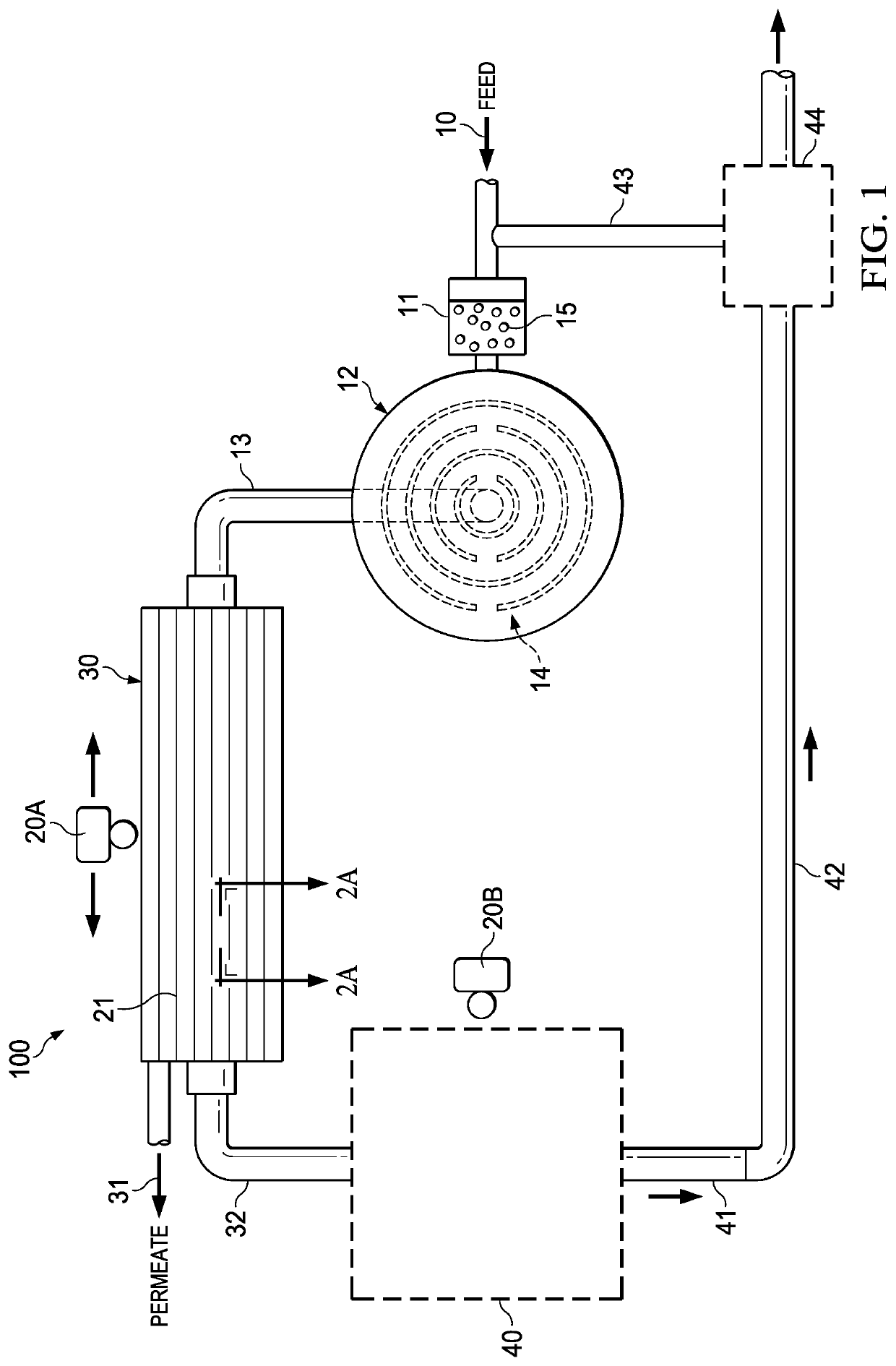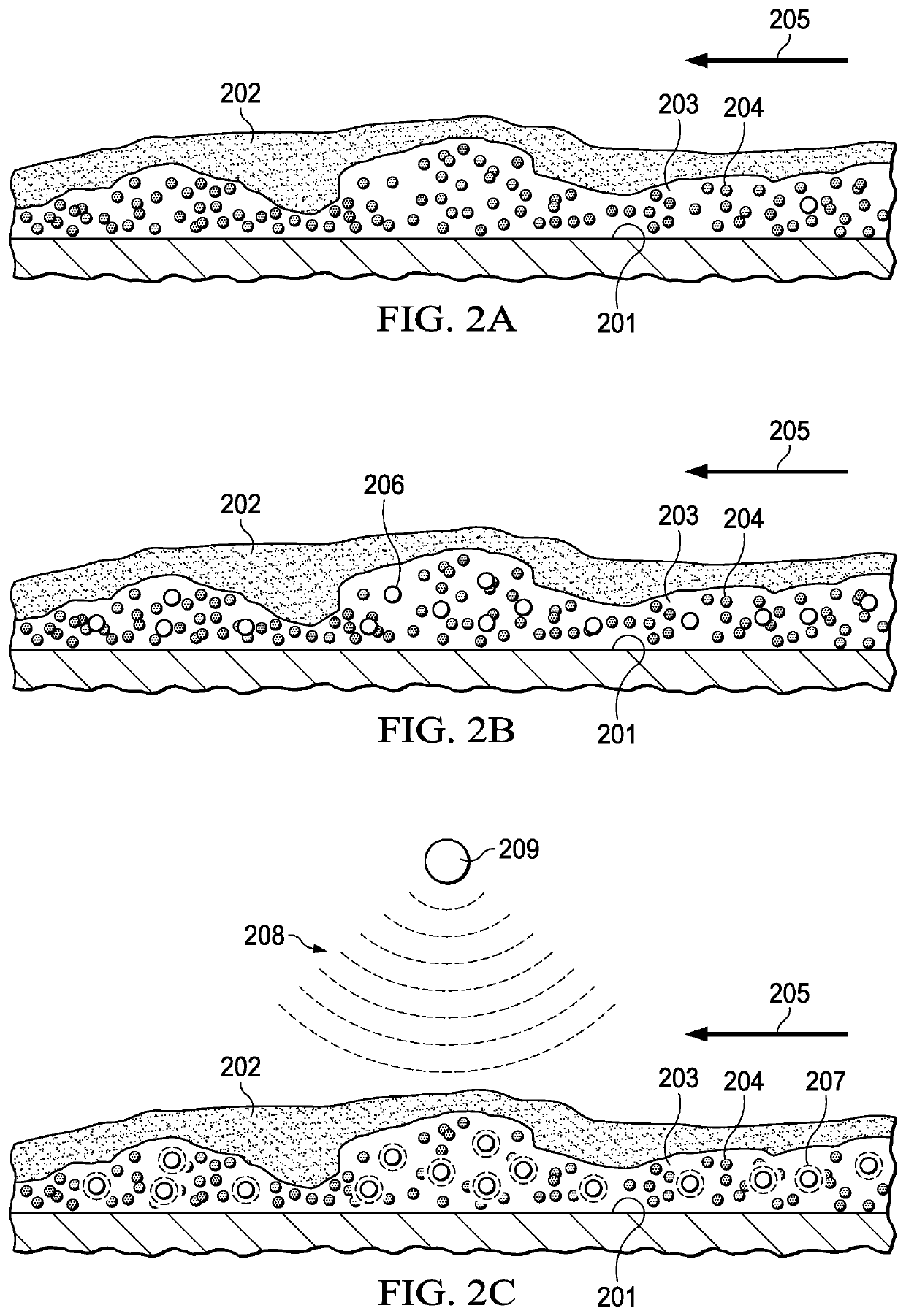Acoustically excited encapsulated microbubbles and mitigation of biofouling
a technology of encapsulated microbubbles and encapsulated microbubbles, which is applied in the direction of cleaning using liquids, membranes, lighting and heating apparatus, etc., can solve the problems of reducing the ability of feed water to dislodge biofilms, and reducing the resilience of biofilms. surface and difficult to remove. , to achieve the effect of increasing the sonication
- Summary
- Abstract
- Description
- Claims
- Application Information
AI Technical Summary
Benefits of technology
Problems solved by technology
Method used
Image
Examples
example 1
[0077]Example 1 is a general use description of the claimed method. The method is useful in a variety of membrane filtration systems including reverse osmosis systems, microfiltration systems, ultrafiltration systems, nano-filtration systems, forward osmosis systems, and membrane distillation systems. The membrane filtration system can be in any configuration (e.g., spiral wound, tubular, hollow fiber, flat sheet, etc.). The membrane filtration system can be submerged or pressurized. Microbubbles used in the present invention are usually sized less than 1 micrometer (μm), and preferably range from 5-50 microns in diameter size or from 0.5 μm to 10 μm for use in the present invention. Membrane thicknesses (while they depend on the system implementation) will range from 0.01 microns to 1000 microns, with 0.1 microns to 10 micron being a preferred thickness range for this example.
[0078]For this example, one or more filtrate and retentate ports are used, with each being sized approximat...
example 2
[0086]Example 2 is directed to a method of using the membrane filtration system and membranes of FIGS. 1 and 2A-2D, and reference numerals herein refer to the same elements depicted in FIGS. 1 and 2A-2D. This method is useful regardless of the quality of the feed source. The feed solution may be selected from the group consisting of fresh water, ground water, brackish water, sea water, waste water, and industrial water. By way of example, the methods provided herein for Example 2 are for water desalination and water reclamation / reuse systems.
[0087]As shown in FIG. 1, water in need of treatment, such as brackish water used in this example, enters the membrane filtration system (100) as part of the feed solution stream (10). Encapsulated microbubbles (15) having a compressed gas core with one or more ligands on the encapsulation shell that are selected for the specific type of EPS in the brackish water are synthesized in the microbubble production unit (11). The feed solution stream (...
PUM
| Property | Measurement | Unit |
|---|---|---|
| thickness | aaaaa | aaaaa |
| thickness | aaaaa | aaaaa |
| operating pressure | aaaaa | aaaaa |
Abstract
Description
Claims
Application Information
 Login to View More
Login to View More - R&D
- Intellectual Property
- Life Sciences
- Materials
- Tech Scout
- Unparalleled Data Quality
- Higher Quality Content
- 60% Fewer Hallucinations
Browse by: Latest US Patents, China's latest patents, Technical Efficacy Thesaurus, Application Domain, Technology Topic, Popular Technical Reports.
© 2025 PatSnap. All rights reserved.Legal|Privacy policy|Modern Slavery Act Transparency Statement|Sitemap|About US| Contact US: help@patsnap.com



